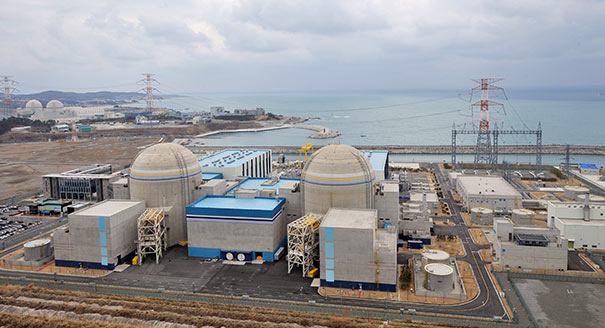Source: Diplomat
South Korean President Moon Jae-in announced on October 22 that he would resume the construction of two nuclear reactors which had been temporarily halted since mid-July, accepting a deliberative poll in favor of the resumption. On the surface, this decision might be seen as a direct blow to Moon’s nuclear phase-out policy; however, this deliberative democratic process will have a more complicated effect on South Korea’s long-term energy policy. The majority of the respondents ironically supported restarting construction on the two plants and scaling down nuclear power generation at the same time. Such an ironic but eclectic decision made by citizens will contribute to managing a sharp conflict between pro- and anti-nuclear groups while giving some degree of domestic legitimacy to Moon’s long-term energy roadmap for a gradual nuclear phase-out.
South Korea is the fifth-largest producer of nuclear energy in the world, with its 24 reactors generating about a third of its electricity. During his presidential campaign early this year, Moon pledged to phase out coal and nuclear energy, mainly due to the public’s growing concerns about air pollution and nuclear safety. Instead, Moon vowed to increase the share of renewable energy up to 20 percent of total electricity generation by 2030. After taking office, Moon reconfirmed his campaign promise; in a speech to mark the permanent shutdown of Kori-1, South Korea’s oldest commercial nuclear reactor which went into operation in 1978, he declared, “We will abolish our nuclear-centered energy policy and move towards a nuclear-free era. We will completely scrap construction plans for new nuclear reactors that are currently under way.”
As of late May 2017, state-run nuclear operator Korea Hydro & Nuclear Power (KHNP) had five new nuclear reactors under construction; among them, three reactors were nearly complete while other two (Shin Kori no. 5 and no. 6) had been 28.8 percent done (10.4 percent in terms of actual construction) with roughly $1.4 billion already spent and estimated total losses (sunk costs) of $2.3 billion. Moon’s pursuit of “a nuclear-free era” made the fate of the two ongoing construction projects controversial, sparking heated debates between pro- and anti-nuclear campaigners in South Korea. Advocates for resuming the construction assured that the Shin Kori 5 and 6 would be “the most up-to-date version of the third-generation type, equipped with intensive safety features,” while opponents expressed their concerns about the location of these nuclear reactors in a highly-populated area, no matter how advanced safety measures would be.
This article was originally published in the Diplomat.







